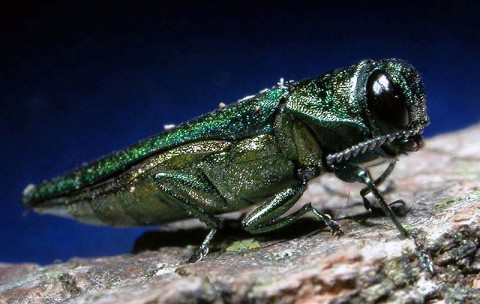 Nashville, TN – Emerald Ash Borer, an invasive insect that destroys ash trees, has been found in Jackson and Scott counties. The identification was made recently and has been confirmed by USDA.
Nashville, TN – Emerald Ash Borer, an invasive insect that destroys ash trees, has been found in Jackson and Scott counties. The identification was made recently and has been confirmed by USDA.
Both counties will now be placed under quarantine. Earlier this summer, Hamilton County was also placed under quarantine when EAB was found in trees near a rail hub in Chattanooga, TN.

EAB was first discovered in Tennessee in 2010 at a truck stop along I-40 in Knox County. In addition to Knox, eighteen other counties in Tennessee including Anderson, Blount, Campbell, Claiborne, Cocke, Grainger, Greene, Hamblen, Hamilton, Hancock, Hawkins, Jefferson, Loudon, Monroe, Roane, Sevier, Smith, and Union counties are under state and federal quarantines. Jackson and Scott counties will now be added to this list.
The EAB quarantine prohibits the movement of firewood, ash nursery stock, ash timber and other material that can spread EAB. With the new discovery, citizens can expect expanded surveys and should report any symptomatic ash trees to TDA.
Citizens can help stop the spread of EAB just by following a few simple steps.
- Leave firewood at home. Don’t transport firewood, even within the state.
- Use firewood from local sources near where you’re going to burn it, or purchase firewood that is certified to be free of pests (it will say so on the label included with the packaging)
- If you have moved firewood, burn all of it before leaving your campsite.
- Watch for signs of infestation in your ash trees. If you suspect your ash tree could be infested with EAB, visit www.tn.gov/agriculture/eab for a symptoms checklist and report form or call TDA’s Regulatory Services Division at 1.800.628.2631.
For more information about EAB and other destructive forest pests in Tennessee, visit the new website: www.protecttnforests.org. The site is a multi-agency effort to inform and educate Tennesseans on the harmful impacts insects and diseases have on our trees, where the problem spots are, and what landowners can do to help protect their trees.
Other EAB information:
EAB attacks only ash trees. It is believed to have been introduced into the Detroit, MI area approximately 20 years ago on wood packing material from Asia.
Typically, the Emerald Ash Borer beetles can kill an ash tree within three years of the initial infestation. Adults are dark green, one-half inch in length and one-eighth inch wide, and fly only from April until September, depending on the climate of the area.
In Tennessee, most EAB adults would fly in May and June. Larvae spend the rest of the year beneath the bark of ash trees. When they emerge as adults, they leave D-shaped holes in the bark about one-eighth inch wide.
The Tennessee Department of Agriculture Division of Forestry estimates that five million urban ash trees in Tennessee are potentially at risk from EAB. The risk represents an estimated value loss of $2 billion. There are an estimated 261 million ash trees on Tennessee public and private timberland potentially valued as high as $9 billion.
For more information about other programs and services of the Tennessee Department of Agriculture visit www.tn.gov/agriculture.


